
That turned out much better than I imagined it I won't lie
There Are No Good Anti-Scandinavians
You must accept the Scandi!Anti-Scandinavians are lines (after 1.e4) that don't capture on d5, where White attempts to take us away from the known territory and get something different from what we're hoping for.
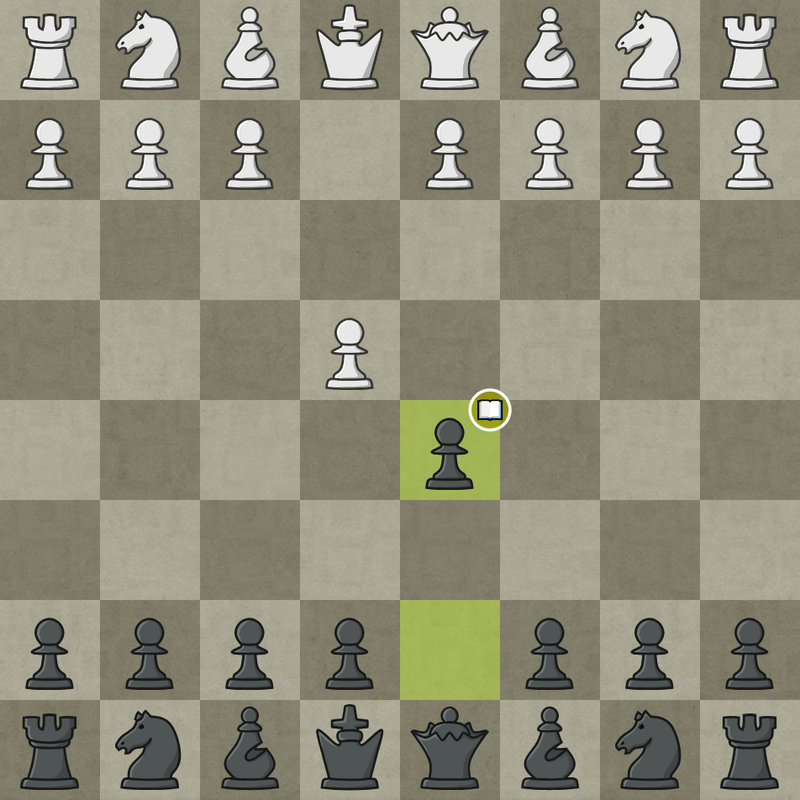
Since by playing 1... d5 we are actually attacking the e4 pawn, White has to either move, defend or gambit the pawn. Refuting or declining gambits is pretty fun, so let's gloss over them first.
Part 1 — Gambits
There aren't many good ways for White to give up the e4 pawn and have anything to show for it, since we didn't play either e6 or c6, so our position is very flexible.
The 2 most popular gambits (on the 2nd move) are Blackmar-Diemer and Tennison.
2.Nf3 — Tennison Blunder... oh sorry, I meant Gambit
Before anything, three quick rules:
1. Defend the pawn with the bishop first!
2. We are not giving the pawn back unless White goes Qe2.
3. If White plays Qe2 before Bc4 — you play Nc6! Got it?
Nc3–Bc4–Qe2
Nc3-Qe2
Qe2
If White breaks with d3 of f3, simply capture and be a clean pawn up. There isn't much more to say about this dubious gambit. A much better try is the Blackmar-Diemer, where White doesn't dance with the f3 knight without a purpose.
2.d4 — Blackmar-Diemer
Okay, this gambit is very strong. White has more central space thanks to the d4 pawn and very easy and quick development to follow it up. Engine always finds a way to consodilate, but I find this approach very impractical. Therefore, I believe we should decline this one.
We can do that by taking on e4, but not bothering to defend it (3.Nc3 e5!?), but we can also use the fact that White played e4 and d4 and transpose to the Nimzowitsch with 2... Nc6!
The biggest problem with playing 1.e4 Nc6 is that White can simply decline it with 2.Nf3, 2.Nc3, or even 2.Bb5!?, which they can't do in the Blackmar-Diemer!
Now White has 4 main options: 3.e5 (Advance), 3.exd5 (Exchange) 3.Nc3 (Bogoljubow) and rare 3.Bb5. 3.exd5 transposes to the Scandinavian, which I'll cover in a later post.
First, let's focus on the open Variations, where White allows us to take on e4, starting with rare 3.Bb5
Pin d5
Pin Nc3
There is so much room for White to make a mistake and just go down a pawn. A much better way of keeping the position open is 3.Nc3 — The Bogoljubov Variation.
It is very tricky for both colors. White can easily find themselfs under a lot of pressure with mindless moves, but so can Black. There isn't a simple way of avoiding all trouble for Black, but I'll do my best to guide you through the most common trenches.
Bogoljubov Nxe4
Bogoljubov Qd4
Bogoljubov Bf4
Last but not least is the Advance Variation after 3.e5. We respond with 3... Bf5 and most likely 4... e6. And like in the Tennison Gambit, here are some more quick rules:
1. Against Bd3 defend the f5 bishop (Nge7, Nh6), don't capture on d3.
2. Against h4 (like in Tal Variation in the Caro) DON'T play h5! There are better ways to deal with the threat of trapping our bishop.
3. Against f4 play h5–Nh6. Develop around the STRONG centre.
4. Against Nf3 play f6. ATTACK the WEAK centre.
5. Against Bb5 play a6. Bxc6 isn't scary as we get to play c5 twice!
6. If White does something weird, our main idea is the same — ATTACK the WEAK centre with f6.
I don't want you to learn the lines instead of feeling the position, so I'll show only the ideas, but I might follow it up with a later post on the Nimzowitch Defence (including the Declined Variation – 2.Nf3).

4.c3 e6 5.Bd3 Nge7 6.Nf3 f6 7.exf6 gxf6 — Since we recaptured with the g-pawn, we aim to play e5 and castle queenside.

4.c3 e6 5.Bd3 Nge7 6.Nf3 f6 7.O-O — if White has to end up recapturing with a pawn, taking on e5 is good.
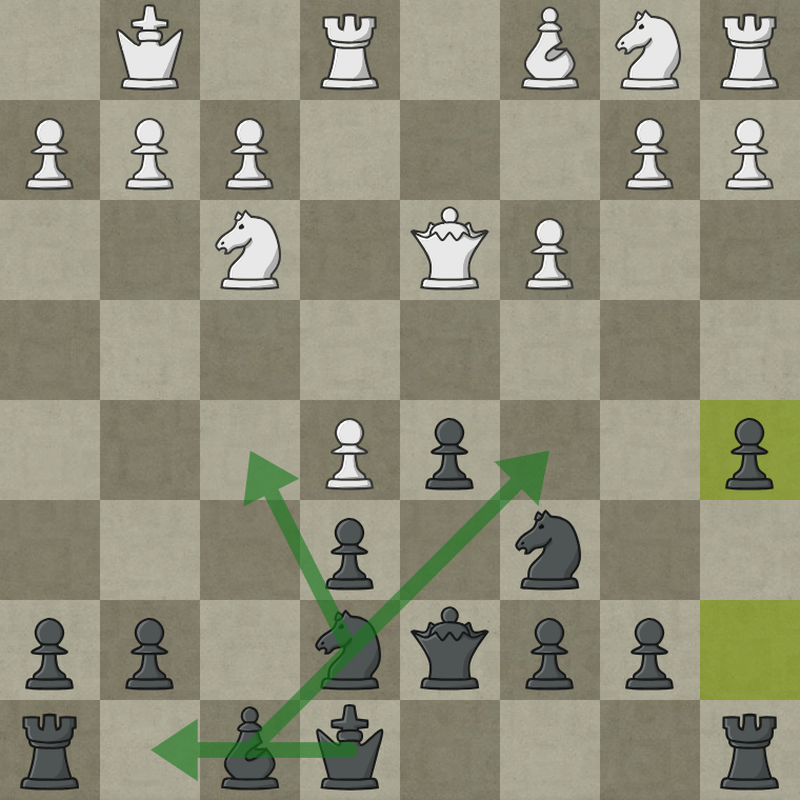
7... fxe5 8.dxe5 Qd7 9.Re1 Bxd3 10.Qxd3 a5 — Black doesn't have a weakness on e6, and can utilize the open f-file.
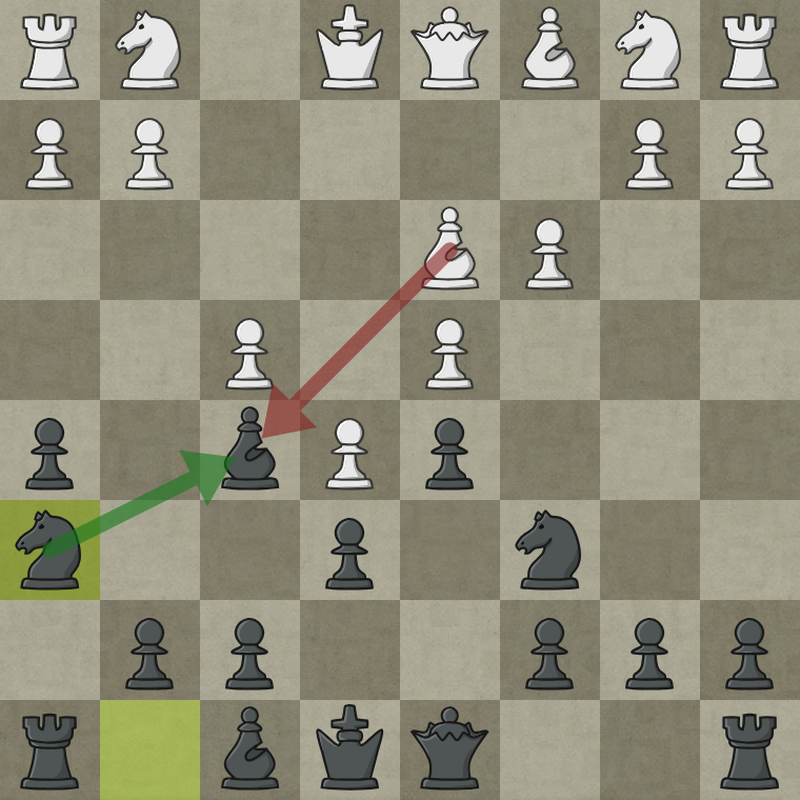
4.c3 e6 5.f4 h5 6.Bd3 Nh6 — better way of defending the bishop.
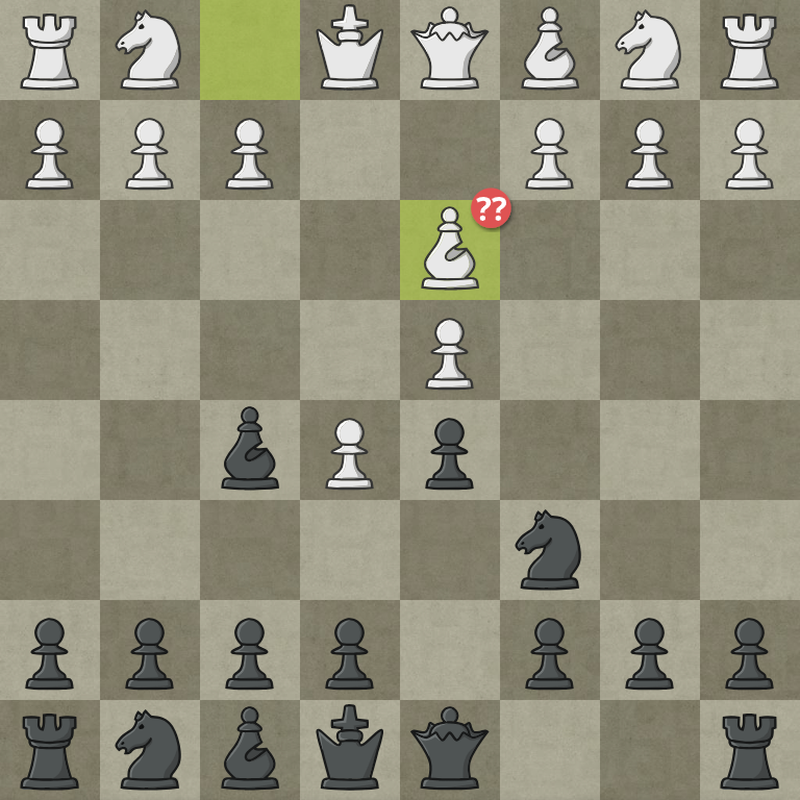
4. Bd3 — now we can't defend the bishop with Nge7, but White has a bigger problem to worry about. Can you spot it?

4.h4 Qd7! — with f6 on the next move White is under real pressure. Nf3 runs into Bg4, and f4 creates a hole on g4 after h5 by us.
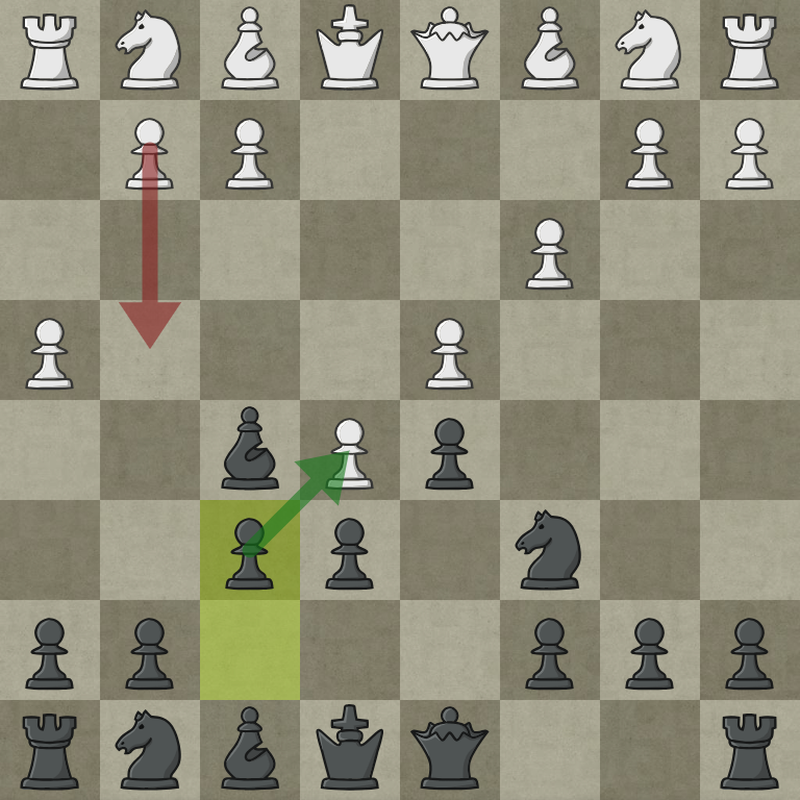
4.c3 e6 5.h4 f6! — After 6.g4 Be4! 7.f3 Bxb1 White will lose the e5 pawn. And 6.Nd2 fxe5 7.g4 Bg6 8.h5 doesn't trap the bishop, we have the f7 square!
Enough with the gambits (for now), let's look at what happens if White keeps the position closed by playing 2.e5
Part 2 — Closed Scandinavian (2.e5)
Many people call it a better Caro, or a better French which is only true if White goes for d4, which they sometimes don't do, especially if we play 2... c5 — choosing f4 instead. It's very annoying, as we get a very un-scandinavian position with no pressure on the d4 pawn (because it's not there), and unclear plans. We don't want that, so what should we do instead?
The plan is to bait out d4. We will start with Bf5 and if White goes for something different than d4, we will not touch the queenside at all! With this we can get a better grip on the kingside with h5–Nh6–Be7–O-O–Bg6–Nf5–h4 and sometimes even Ng3. Let's see that in action!
d4
f4–d4
only f4
I won't pretend that I understand the position if White doesn't commit to d4, in fact in these kinds of position I struggle, that's why my approach with delaying c5 in order to bait out d4 from White. And if that doesn't work at least you know Ne3 never works. With the rook on b1 runs into tactics, without it the b2 pawn hangs.
Part 3 — Defending the pawn
The last way for White to adress the tension in the centre is to defend the e4 pawn. The most popular way to do so is 2.Nc3, which is considered the only serious alternative to 2.exd5, but there is one big problem with it which I'll save for last ;). Only other sensible way is 2.d3. If White tried 2.Qf3/Qe2 just take on e4 and chase the queen, if 2.f3 go for 2...e5! and enjoy a better position.
2.d3 — Endgame Offer
Of course we aren't interested in a queen trade, instead we will prepare to take the full centre with e5. There are annoying details if you go for 2... e5 instantly, so I prefer to prepare it with 2... Nc6. White can choose to ignore the tension (a normal Pirc position), or take it and we will get a better reversed centre game.
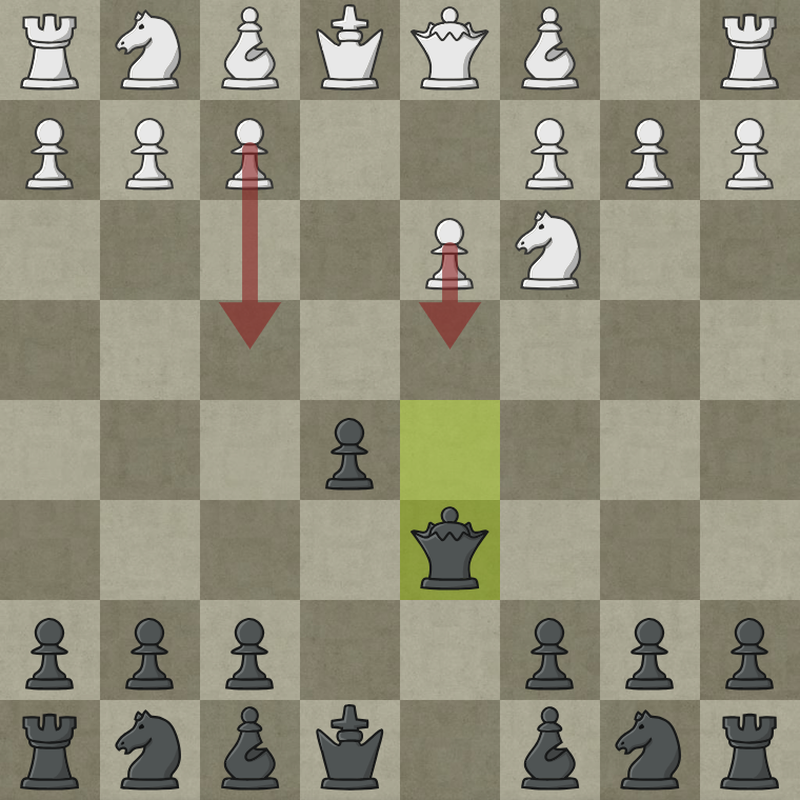
1.e4 d5 2.d3 e5 3.exd5 Qxd5 4.Nc3 Qd6 — both 5.d4 and 5.f4 are very rare, but annoying to deal with, so why bother?
Centre game Nf3–Be2
Centre game Nf3–g3
Pirc Nf3–Nd2
2.Nc3 — Scandinavian Reinvitation
Funnily enough, I used to play 2.Nc3 myself against the Scandinavian for some time with an amazing score (64-27%), but as I mentioned before, there is one little problem with this line for White. 2...dxe4 3.Nxe4 Qd5! and we either get what we want — the Scandinavian (after 4.Nc3 Qa5), or what we want — a very aggressive position with opposite-side castling (after anything else lol).
In case you are a Modern Scandi player (2... Nf6) going for 2...dxe4 3.Nxe4 Nc6 with Nf6 to follow is also a great option.
Since this post is about anti-Scandinavians and White isn't forced to play 4.Nc3, let's look at what happens when White still tries to avoid my beloved opening.
4.Ng3
4.d3
4.Qf3

But that isn't everything. Remember in the gambits section I wrote "The 2 most popular gambits (on the 2nd move) are Blackmar-Diemer and Tennison". Turns out that by playing 2...dxe4 against 2.Nc3 we allow White 2 more gambits with 3.d3 and 3.f3. Let's take a look at them, shall we?
3.d3 — Dunst-Perrenet Gambit
3.f3 — Dougherthy Gambit
Both of these gambits are extremely rare, meaning I'm yet to play the Nc6–e5–Bd6 setup against Dunst-Perrenet, and the queen sac against Dougherty.
Part 4 — Surrendering
The same wy surrendering ends the game, it's time to end this blog. Thank you so much for your time. I hope you found my practical approach useful and the lines interesting. If I missed anything, or you have other interesting response message me, or comment and I'll definitely take a look!
Next up in line are sidelines on the 3rd move in the Scandinavian mainly 3.Nf3 and 3.d4, but there are other weird moves like 3.Qf3. I also want to cover the Nimzowitsch Declined (1.e4 Nc6 2.Nf3) in the near future. Unless I find another interesting idea against completely unrealted opening (or maybe I already did). Study link.
Fly high Danya
You may also like
 CkickyCheck
CkickyCheckPlaying My Own Novelty
I played a novelty I've found myself against a stronger opponent! CkickyCheck
CkickyCheck"Define tactical mess"
A perfect game of chess always ends in a draw... right? CkickyCheck
CkickyCheckI Will Never Again Play a Move as Beautiful as This
A real game position, that could be a puzzle instead CM HGabor
CM HGaborHow titled players lie to you
This post is a word of warning for the average club player. As the chess world is becoming increasin… CkickyCheck
CkickyCheck